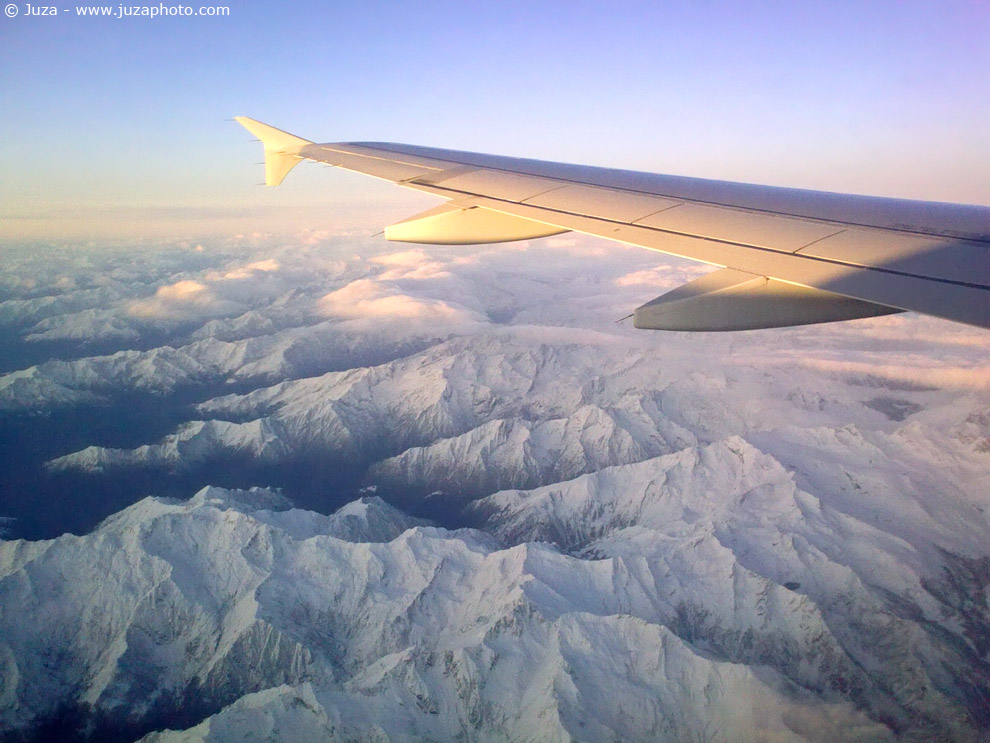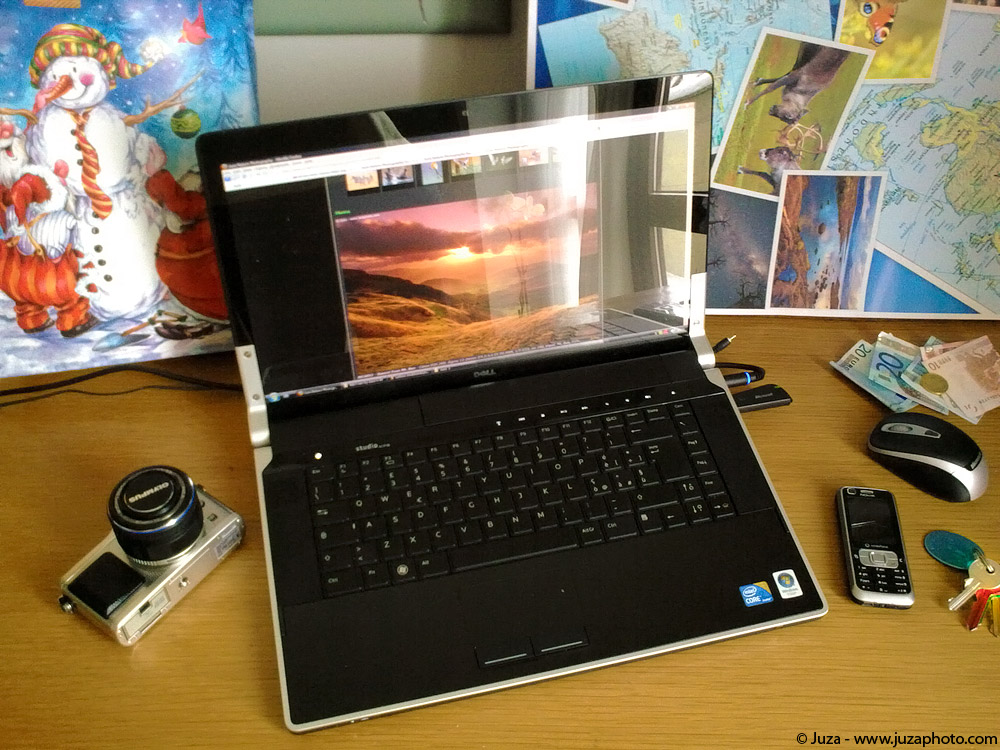Above: photo taken with Nokia 5800 camera phone...this is a pretty poor phone, nevertheless, the image quality is already good for some usages.
Cameras, lenses and technology
This year Nikon has announced some great cameras - the D3s is the state of art in terms of low noise, and the D300s is a nice improvement of the D300 (even though in the $1600 price range I prefer the Canon 7D). I don't expect to see a D4 and D400 soon, since the D3s/D300s have been just announced, but they may come in late 2010...considering that the current cameras are already great, I expect the new generation to be truly spectacular.
Canon in 2009, instead, has been a mixed bag. The 7D is awesome, one of the best cameras ever produced by Canon - good image quality, great video, fast and rich of features at a very affordable price! The 1D Mark IV, instead, had been a disappointment for me: after the 7D, I had great expectations for the 1D4. Instead, the 1D4 is essentially a 1D3 with more megapixels and video...not bad, but not a big step forward either, and in my opinion it is not as good as the Nikon D3s, that has FF sensor and - from the samples I have seen - better high ISO capabilities.
With the D300s and 7D, APS-C cameras have reached a quality that is good enough for most applications. Of course, using the same technology, FF will always have an advantage, but: 1) often the technology is not on par 2) you have to evaluate if the FF advantage is worth the higher price. I believe that fullframe will be always be the best for specific application, as extreme low noise (e.g. the Nikon D3s) or extreme high resolution (the future 30+ megapixels Canon 1DsIV), but APS-C will stay as mainstream format. Medium format will survive as an extremely niche format, as far as it gives much higher resolution than FF cameras.
Video is now a standard feature in every reflex, and it keeps getting better and better - the 7D video has nearly everything a video amateur may want (except usable autofocus). Canon is currently the leader in video performance, while Nikon is a step behind, but I expect to see much better video in Nikon cameras by the end of next year. At the very high end, the new
RED Epic and Scarlet are coming closer to production: these cameras offers "out of this world" video quality and high end features for much lower prices than other super high end cameras, but they are still expensive products (from $4,500 for the cheapest model to the $ 60,000 of the Epic 617, and these prices are easily doubled if you add some accessories and memory cards). If you are into professional video you may be interested, while for the video amateurs a camera as the 7D is more than enough.
In term of lenses, in 2009 there have not been big announcements; the most interesting new lens is, in my opinion, the Canon 17mm TS-E, that is a great lens but for very specialist use. Next year, I hope to see some super wide lenses for APS-C - something like 8-20mm, to equal the Sigma 12-24 on fullframe; I don't expect to see these lenses from Canon or Nikon, but Sigma or Tamron may announce something like that (if image quality will be good, I'll buy it in a heartbeat). Other than that, I'd like a new 180 or 200mm macro with image stabilization; even though I take the 99% of my macro with tripod, the IS would help in the rare situations when I have to handhold the lens.
Memory cards are getting bigger and faster; this year all major manufacturers have announced their 64 GB compact flash, and Pretec has announced even a 128 GB CF: I expect to see others 128 GB CF by the end of next year from SanDisk and Transcend, too. With one of these cards, you have enough space for thousand of photos, and they are way safer than portable HDDs. In 2010 I expect to see the debut of the first 64 GB SDXC cards, too. That said, while increased size is always welcome, speed is not always necessary: first, you have to see if your camera is able to take advantage of super fast cards, second, you have to evaluate if you really need that speed...if you take macro and landscape photos, a super fast card is money thrown away.
Camera phones have now reached the quality of a consumer digicam.
The Samsung M8920 has 12 megapixel, relatively good image quality in low light, xenon flash, 3x optical zoom, full manual control on exposure and 1280x720px at 30FPS video...wow! Of course it can not be compared with a reflex camera, but for me it replaces the need for a compact camera. While I don't carry always with me my Canon 7D, the mobile phone is always in my pocket, and a phone with good camera capabilities is a great tool for snapshots and for many usages where image quality is not essential. Currently I have the Nokia 5800 that is so-so in terms of camera, but I'm going to buy the Samsung M8920 when it will arrive in the European market. By the way, the M8910 is not just a good "camera" - it is almost a "mobile computer", it has an advanced smartphone OS, great screen, internet, DivX support, mp3, and a tons of other features.
About me and my equipment
This year I have not done any change in my lens lineup, and honestly I don't feel much need for change here: I have the four essential lenses for nature photography (wide angle - Sigma 12-24, standard zoom - Canon 24-105, macro - Canon 180, tele - Canon 300 2.8 IS), plus two "specialist" lenses, the super bright Sigma 20 f/1.8 and the super telephoto Canon 600 f/4 IS. I have not used a lot these two, even though sometimes they have helped to get otherwise impossible photos, while I used a lot the other four. In particular, the 300 f/2.8 IS (with teleconverters) has replaced the 600 f/4 in most of my travels...I love the 300! It is small, light and super sharp. The only lens I'd buy is a 8-20mm or 7.5-20mm for APS-C sensors, if some manufacturer announces it - I'd use it on the 7D instead of the Sigma 12-24 on 1DsIII.
Instead, I have used two new cameras - in early 2009 I bought the 500D, and I have appreciated its video capabilities and the increased reach given by the small pixels. Later in November, I have replaced it with the 7D, that is a truly awesome camera - I like it so much that now I use it as my main camera body, even though I still own the 1DsIII that I use for landscapes. You may be surprised, but reality is that in two years the technology has made big advancements, and nowadays even a 1400 € camera is better (in some respects, not all) than a 2 years old 8000 € camera as the 1DsIII. Of course, there will always be those who claim that a more expensive camera, or a "1 series" camera is always the best - I believe these claims are plain wrong but, after all, who cares: everyone is free to spend his money for the thing he prefers :-)
In 2009, I have made a big update to the JuzaPhoto website - the page width has jumped from 800px to 1240px. While the majority of comments was positive, there were some JuzaForum users saying it was too much, the facts have proven them wrong: the visits have kept increasing after the upgrade to 1240px :-)
One of the main reason for this upgrade was to make room for the new photos at 1200px resolution: it has taken three months to replace all previous 720px images with the 1200px version, but I think it was worth the effort. The photos at 1200px shows a lot more detail and they are a pleasure to view on large screens; other than that, resizing the images to 1200px helps to make a more rigorous selection - only photos with quite good image quality looks great at 1200px.
Above: my Dell Studio XPS 16 laptop. By the way, the photo is taken with Nokia 5800 camera phone!
The Dell Studio XPS 16 workstation and post processing
In December 2009, I have replaced my desktop computer with a Dell Studio XPS 16 laptop (+ Eizo FlexScan S2433W-H external screen). You may be surprised to know that I use a laptop as my workstation, but it gives some advantages, even though it is not the best choice for everyone.
In terms of speed, the XPS 16 is more than enough for current 15-25 megapixel cameras: I have customized it with the Intel i7 720 QM processor (quad-core, 1.60 Ghz, 6 MB cache L3), 4 GB DDR3 1333mhz RAM memory and 256 GB SSD drive. Of course if I had chosen a desktop I could have bought a way more powerful system for the same money, but honestly I don't need more speed for now :-)
For my work, the mobility of a laptop is a great advantage in comparison with a desktop computer: I travel a lot, and in some of these trips it is great to have the computer with me; other than that, I use it for post-processing workshops, and I can easily carry it around everywhere. Buying a cheaper laptop and a desktop was not an option because all the software I use is legal, and the licenses does not allow to use it on two computers.
The screen is the main limitation of many laptops, and sadly the XPS 16 is no exception - even with the expensive 16" RGB LED screen, it is not good for post processing. The colors are pleasing, but they are inaccurate (too cold and too saturate) and even if you calibrate it, it is enough to move a little your head to screw up the brightness. Other than that, the resolution of 1920x1200px on 16" is fantastic to watch photos and videos, but it makes difficult to evaluate sharpening and noise, and it is a bit too much even for web surfing - some websites looks way too small and by increasing their size with the magnification of the browser you screw up the layout. For these reasons, when I am at home I use the XPS 16 with an high quality external screen, the 24", 1920x1200px Eizo S2433W, that allows to make an accurate post processing. Other disadvantages of the Dell XPS 16 are that the screen is a dust-collecting machine (I have never seen a screen getting so much dusty in so little time) and the audio quality is very poor.
Of course, if you don't need the versatility of a laptop, a desktop PC (or Mac) is a better choice - you can get the same speed of an high end laptop for a lot less money. But if you have exigencies similar to mine, a laptop + external screen is a great choice!



 JuzaPhoto contains affiliate links from Amazon and Ebay and JuzaPhoto earn a commission in case of purchase through affiliate links.
JuzaPhoto contains affiliate links from Amazon and Ebay and JuzaPhoto earn a commission in case of purchase through affiliate links.